We left this match with Italy leading by 890 points, or 162-141 in today’s imps, with 152 boards left to play. The Italians picked up another 800 points on the next boards, then this board hit the table.
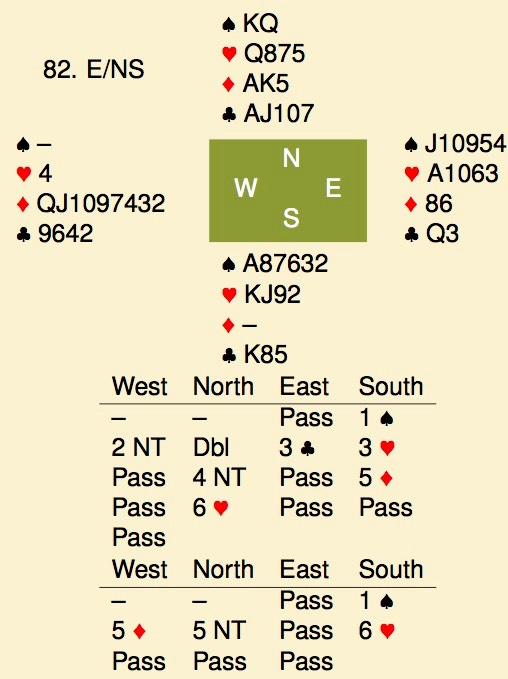
Closed Siniscalco overcalled what I would consider a very unusual NT, with an 8-4 shape and virtually non existing clubs. Forquet gave preference and the Americans bid the obvious slam. No doubt inspired by the 3♣ bid, west led the ♣2 (4th best) for the ♣10, ♣Q and ♣K. ♥J was won by the ace, and east returned the ♣3, ♣9, ♣10. That set up the club suit. Declarer cashed the ♠KQ, drew trumps and claimed 12 tricks: 4 clubs, 3 spades, 2 diamonds and 3 trumps. +1430 to the US.
In the closed room, an aggressive (by 1957 standards) 5♦ overcall. I’m not sure what 5NT is supposed to show, but the same 6♥ contract was reached. West had an obvious lead of the ♦Q won by the ♦A, with south pltching the ♠5. Declarer played the ♥5 to the ♥J, then the ♥2 to the ♥Q, east ducking twice and west pitching diamonds. The ♥7 was led, won by east, who returned his second diamond. Declarer drew the last trump and cashed the ♠KQ. When those didn’t break, he had to turn his attention to the clubs. Small from dummy to the ♣K, next the ♠A, and a club back.
What do we know at this point? West has started with no spades, 1 heart, 8 diamonds and 4 clubs, and thus east started with 5♠-4♥-2♦-2♣. At this point, west is down to the ♦J and 2 clubs, while east has 1 club and 2 spades. Either way, this suggests that west is a 2:1 favorite to hold the ♣Q.
Accordingly, south led the ♣8 to the ♣10 and east’s (by now) stiff ♣Q. East cashed 2 more spades for down 3. +300 to the US, for a total of +1730, the biggest swing of the event. That tied the match after 82 boards. I think south played this correctly, but was just unlucky.
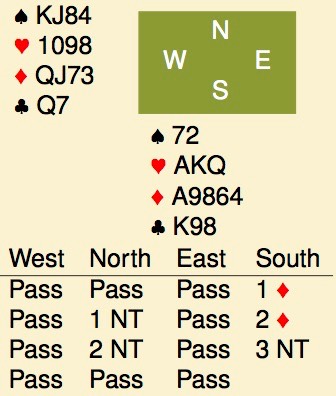
At this point, somebody Italian must have said Basta! (=enough is enough) as over the next 80 boards, the Italians picked up swing after swing, basically outplaying and outbidding their opponents on every major hand, leaving their opponents totally confused at the table. An example.
After a string of bad boards, you then pick up the west hand on the left. Everything natural, though 1NT may conceal a 4 card major (as opener would have opened a major with 4 of them and 5 of a minor). Partner leads the ♠5, ♠2, ♠K, ♠A. ♠10 back, ♠3, ♠7, ♠J. Now what?
While you are thinking about this, an example of outbidding by the Italians, or perhaps underbidding by the Americans:
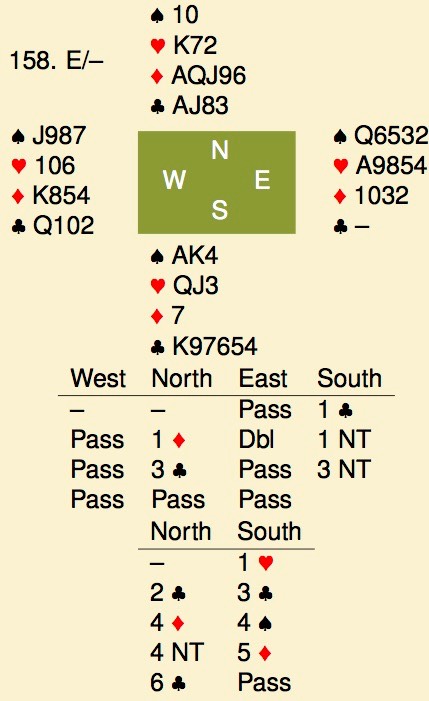
First the American auction. I can understand 1NT with stops in the suits in front of you but 3NT after a forcing 3♣?. What else does partner have to do to show support? West led a club and declarer soon claimed 12 tricks.
In the replay, a typical Roman club auction: there is no opening bid with clubs available, so you open a 3 card suit, then rebid clubs. That shows 5♣, and you hope that partner won’t support your first suit. North did the same: 2♣ in order to show a strong diamond suit later. However, the fit was already found, so cuebids, Blackwood and slam.
We have seen the American tendency to lead unsupported aces against slams in order to find 2 quick tricks, and this was no exception. ♥A and a heart, hoping for a ruff. That wasn’t there, declarer won in dummy and played the ♣K, then claimed.
Finally, a hand where the approach of leading aces should have worked.
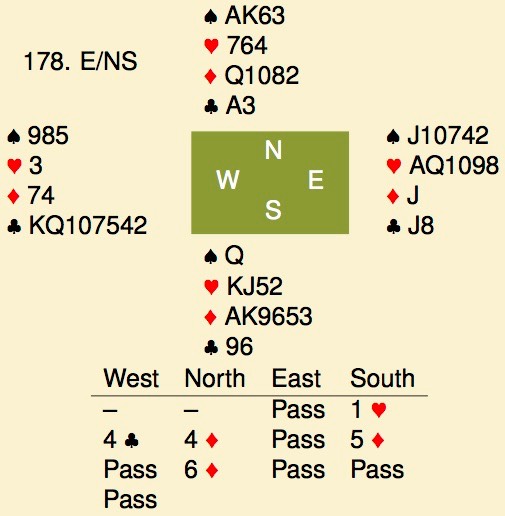
South’s 1♥ is again a canape, showing longer diamonds on the second round and east led the ♥A, ♥2, ♥3, ♥4. But now look at poor east. Obviously, if the ♥3 is a singleton, it is easy, but now note that carding was strictly attitude, and west would also play the ♥3 from ♥X3 or even ♥XX3. East thus decided to continue a club. Declarer won the ♣A, drew trumps, cashed spades, took a heart finesse and claimed. I’m not sure if this is correct defence. It looks as if you are too late to set up a club trick anyway.
At the other table, 6♦ was reached as well, but this time from the south hand. West led the ♥3 and now it was immediately obvious that this was a singleton. ♥A and a ruff sank the contract.
Back to board 128. Partner had led the ♠5 to your ♠K and declarer’s ace, declarer returns the ♠10 to your ♠J.
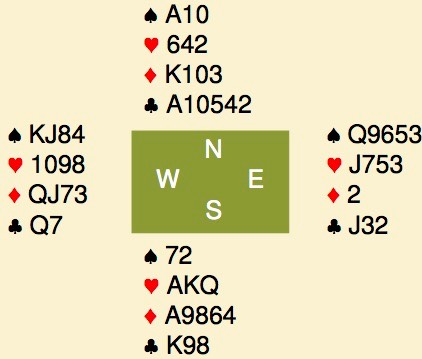
Today this is a well-known theme, if you don’t want your opponents to attack a suit, simply lead it yourself. They might duck the trick, but even if they win it, it is unlikely that they realise that this is the suit to be attacked. Over the years, numerous examples have appeared in the press.
Back in 1957, west fell for it: she couldn’t believe that east had led from queen-5th and assumed something like ♠AQ109 with declarer. At trick 3, she thus tried the ♦5 which ran to the ♦8. Declarer continued diamonds and east discarded a club! That set up the second suit, for an unbelievable 12 tricks.
In the replay, EW led spades, declarer ducked a round then had to lose a trick in a minor. EW cashed out for down 1. +590 to Italy.
At this point, the match was no longer in doubt: Italy leading by 9500 points, or 500-311 in today’s imps, with only 48 boards to be played. There are still a few interesting hands to come though.
To be continued.
